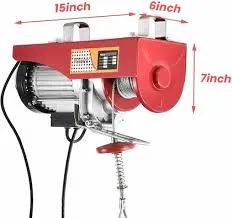


Handling Pallet Trucks Best Practices and Tips
Pallet trucks, also known as pallet jacks, are indispensable tools in warehouses, retail spaces, and manufacturing facilities. These devices are designed to lift and transport palletized goods with ease, significantly improving efficiency in moving heavy items. However, proper handling of pallet trucks is crucial not only for maximizing productivity but also for ensuring the safety of both operators and other personnel. In this article, we will explore the best practices and essential tips for handling pallet trucks effectively.
Understanding the Basics
Before handling a pallet truck, it's vital to understand its components. Pallet trucks typically consist of two forks that slide under a pallet, a hydraulic lift mechanism, and a set of wheels that allow for easy maneuverability. The operator uses a handle to pump the hydraulic mechanism to lift the pallet to a suitable height for transport. Familiarity with these features will enable operators to use the equipment more effectively.
Safety First
Safety is paramount when handling pallet trucks. Here are some key safety tips
1. Wear Appropriate Gear Always wear safety shoes to protect your feet from heavy loads, as well as gloves for a better grip. Ergonomic aids, such as back support, can also help prevent injuries.
2. Check the Equipment Before use, conduct a thorough inspection of the pallet truck. Look for damages, such as cracks in the forks or hydraulic leaks. Ensure that the wheels are functioning smoothly and that the handle operates properly.
3. Know Your Load Limits Each pallet truck has a specified load capacity. Never exceed this limit, as it can cause equipment failure and increase the risk of accidents.

4. Clear Pathways Ensure that the area where you are operating the pallet truck is free from obstructions. This includes debris, uneven surfaces, or other hazards that could lead to accidents.
Proper Lifting Techniques
Using a pallet truck involves more than just pushing and pulling. Adopting proper lifting techniques is crucial
1. Positioning the Pallet When approaching a pallet, align the forks directly under the load and ensure the pallet is stable and centered. A misaligned pallet can tip over during transport.
2. Lifting the Load Use the handle to pump the hydraulic lift, and make sure the pallet is securely raised above ground. Lift just enough to clear the floor but avoid unnecessary height which can affect balance.
3. Maneuvering When moving the pallet, push the truck rather than pulling it. This allows for better control and stability. Always make stationary turns and avoid sudden movements to prevent shifting loads.
4. Descending To lower the load, operate the handle gently to lower the pallet smoothly to the ground. Avoid dropping the load abruptly, as this can damage both the equipment and the items being transported.
Conclusion
Handling pallet trucks efficiently is an essential skill in various industries. By following safety protocols, using proper lifting techniques, and maintaining vigilance, operators can significantly enhance productivity while minimizing the risk of injury. As with any equipment, regular training and practice are vital to ensure that all personnel can operate pallet trucks skillfully and safely. Embrace these best practices, and the benefits of using pallet trucks will undoubtedly be realized in improved efficiency and a safer working environment.



